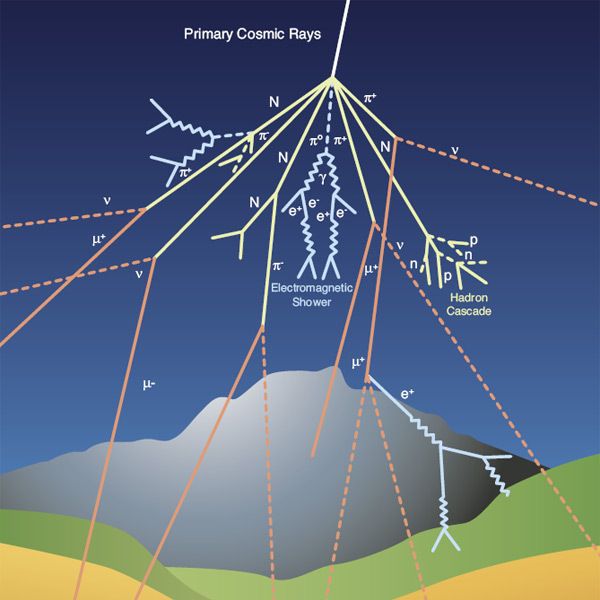Earth is under constant bombardment by high-energy charged particles called cosmic rays. We’re normally shielded from this barrage by Earth’s magnetic bubble, the magnetosphere. But what happens when this shield weakens?
Cosmic rays are primarily hydrogen nuclei blasted into space by powerful celestial events such as the supernova deaths of massive stars. These incredibly energetic particles are normally intercepted by the magnetosphere, which also protects us from harsh solar radiation from the sun.
The magnetosphere is not a monolithic, unchanging entity, however. Not only does magnetic north “wobble” slightly away from geographic “true north,” but the entire magnetosphere occasionally “flips.” This results in the field’s north pole becoming south and vice versa, with the intensity of the field waning in the process.
In addition to this, there are other brief periods during which the two magnetic poles of the magnetosphere “disappear,” to be replaced by a multitude of magnetic poles. During these periods, called “magnetic field excursions,” the strength of magnetic poles also weakens, implying that our planet is less well-protected from cosmic rays at these times.
Related: Where do cosmic rays come from?
The question is, Do periods of low magnetosphere intensity also correlate with major upheavals in Earth’s biosphere, the complete zone of our planet over which life exists, ranging from mountaintops to the deepest ocean trenches?
“Understanding these extreme events is important for their occurrence in the future, space climate predictions, and assessing the effects on the environment and on the Earth system,” Sanja Panovska, a scientist at GFZ Potsdam in Germany, said in a statement.

To determine the periods during which Earth has experienced a heavier than usual bombardment of cosmic rays, scientists can measure the abundances of different isotopes. These are variants of an element that have different numbers of neutrons in their atomic nuclei.
When cosmic rays strike particles in Earth’s atmosphere, they create showers of isotopes called “cosmogenic radionuclides” that rain down to our planet’s surface. These build up over time in sediments, which scientists can study after recovering them from the sea bed and in ice cores drilled from regions like Antarctica and Greenland.
One well-studied example of a magnetic field excursion is the Laschamps excursion, which occurred around 41,000 years ago. Panovska has been studying the relationship between the intensity of Earth’s magnetosphere and the concentration of cosmogenic radionuclides such as beryllium-10 during this event.
She found that the average production rate of beryllium-10 doubled compared to the rate at which this cosmogenic radionuclide is generated by cosmic ray bombardment today. This indicates a very low magnetosphere intensity during the Laschamps excursion, leading to vastly more cosmic rays reaching Earth’s atmosphere and creating showers of secondary particles.
Panovska used these measurements to reconstruct Earth’s magnetosphere, finding that it shrank during this event when its strength decreased. She is hoping this reconstruction will help her and fellow scientists get more information from cosmogenic radionuclide and cosmic ray bombardments.
Panovska presented the cosmic ray findings at the European Geosciences Union (EGU) General Assembly 2024 on Friday (April 19).